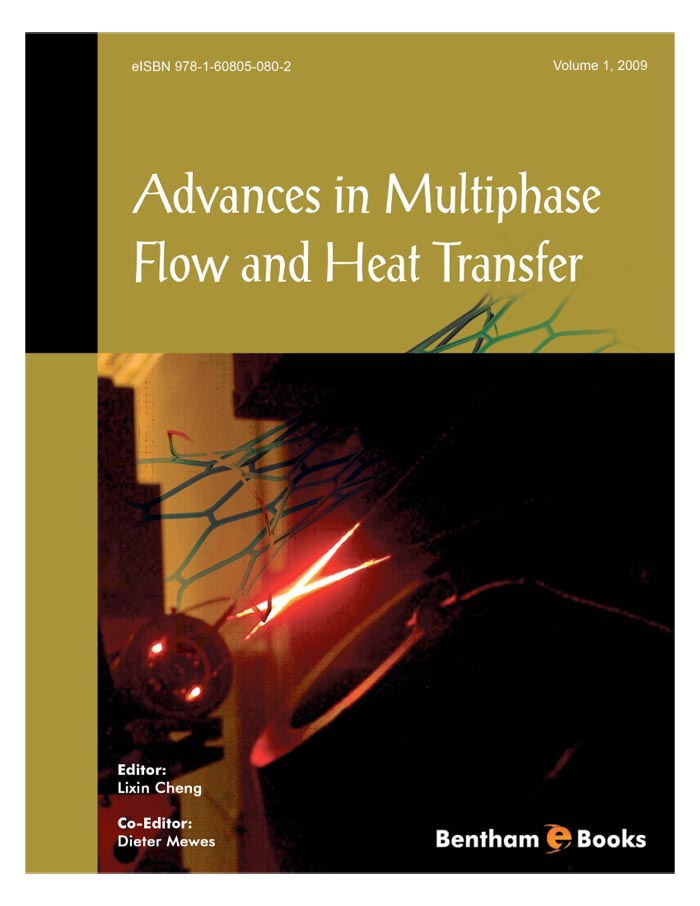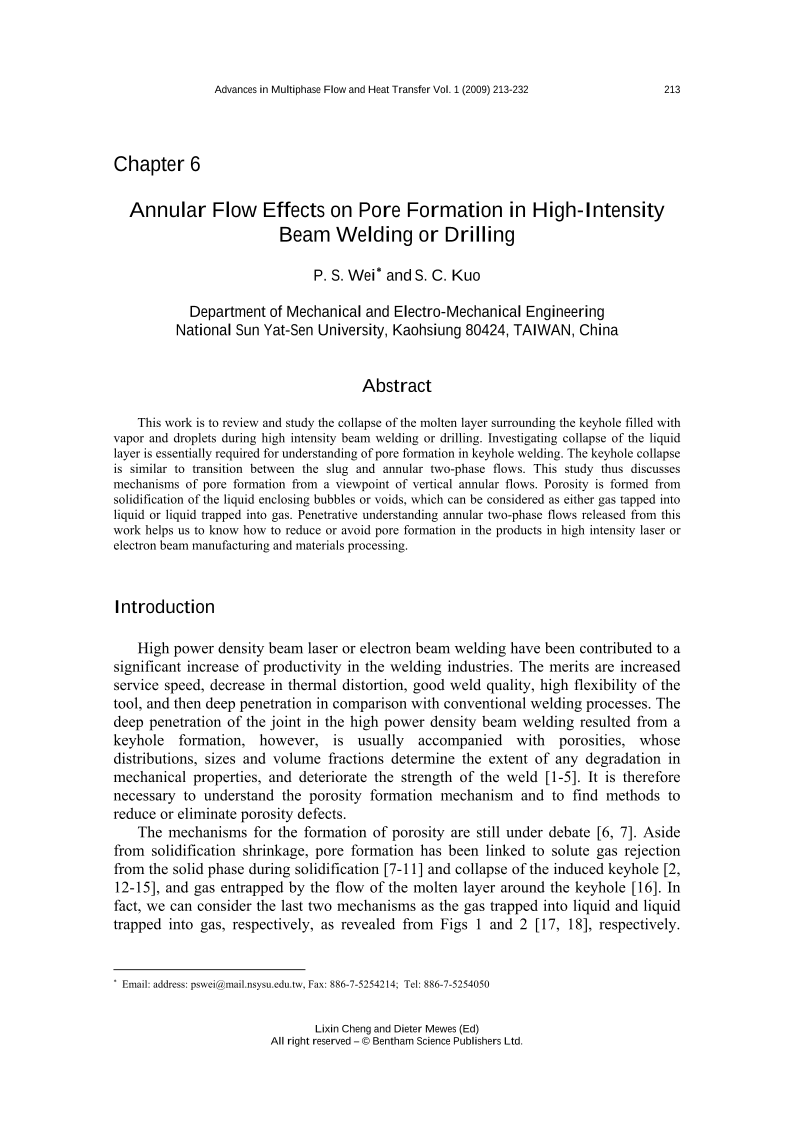Annular Flow Effects on Pore Formation in High-Intensity Beam Welding or Drilling

- Authors: P. S. Wei1, S. C. Kuo2
-
View Affiliations Hide Affiliations1 Department of Mechanical and Electro Mechanical Engineering National Sun Yat-Sen University, Kaohsiung 80424, Taiwan 2 Department of Mechanical and Electro Mechanical Engineering National Sun Yat-Sen University, Kaohsiung 80424, Taiwan
- Source: Advances in Multiphase Flow and Heat Transfer: Volume 1 , pp 213-232
- Publication Date: January 2009
- Language: English
Annular Flow Effects on Pore Formation in High-Intensity Beam Welding or Drilling, Page 1 of 1
< Previous page | Next page > /docserver/preview/fulltext/9781608050802/chapter-6-1.gif
This work is to review and study the collapse of the molten layer surrounding the keyhole filled with vapor and droplets during high intensity beam welding or drilling. Investigating collapse of the liquid layer is essentially required for understanding of pore formation in keyhole welding. The keyhole collapse is similar to transition between the slug and annular two-phase flows. This study thus discusses mechanisms of pore formation from a viewpoint of vertical annular flows. Porosity is formed from solidification of the liquid enclosing bubbles or voids, which can be considered as either gas tapped into liquid or liquid trapped into gas. Penetrative understanding annular two-phase flows released from this work helps us to know how to reduce or avoid pore formation in the products in high intensity laser or electron beam manufacturing and materials processing.
-
From This Site
/content/books/9781608050802.chapter-6dcterms_subject,pub_keyword-contentType:Journal -contentType:Figure -contentType:Table -contentType:SupplementaryData105

